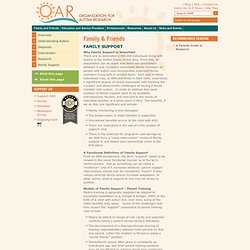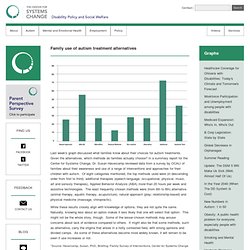

Positive Behavior Support Project – Virginia Autism Resource Center. The Virginia Autism Resource Center collaborates with several agencies, including the Partnership for People with Disabilities at VCU, to offer comprehensive training for an individual to become an endorsed Positive Behavior Support facilitator.

This endorsement arms the individual with the knowledge and skills necessary to work with persons with disabilities, family members and other team members to provide positive behavior supports in the natural environment. Positive Behavior Support is a comprehensive approach to behavior change that combines principles and practices from applied behavior analysis and person-centered planning. It is a research-based approach that teaches people with challenging behaviors, and the people who support them, new skills that promote successful living in community settings. A Positive Behavior Support facilitator works with families and team members to provide support to an individual through a person-centered planning process. Family & Friends » Grandparents. Why Family Support is Important There are an estimated 2,000,000 individuals living with autism in the United States at this time.

From this, an assumption can be made that there are somewhere between 6 and 10 million immediate family members of people with autism and innumerable extended family members living with or around them. Each one of these individuals may, at different times in their lives, experience a significant degree of stress associated with meeting the complex and idiosyncratic challenges of having a family member with autism. In order to address this need, systems of family support need to be available, individualized, flexible, and relevant to the needs of individual families at a given point in time.
The benefits, if we do this, are significant and include: A Functional Definition of Family Support From an ABA perspective, the term "support" needs to be viewed in the same functional manner as is the term reinforcement. Family use of autism treatment alternatives. Last week's graph discussed what families know about their choices for autism treatments.

Given the alternatives, which methods do families actually choose? In a summary report for the Center for Systems Change, Dr. Susan Havercamp reviewed data from a survey by OCALI of families about their awareness and use of a range of interventions and approaches for their children with autism. Of eight categories mentioned, the top methods used were (in descending order from first to third): additional therapies (speech-language, occupational, physical, music, art and sensory therapies), Applied Behavior Analysis (ABA) more than 20 hours per week and assistive technologies.
The least frequently chosen methods were (from 6th to 8th) alternative (animal therapy, aquatic therapy, acupuncture), natural approach (play; relationship-based) and physical medicine (massage, chiropractic). While these results closely align with knowledge of options, they are not quite the same. ASCV - Resource List. Interactive Autism Network Community. IAN Research Report #8 - April 2009: Family Stress - Part 1Child Behaviors Date First Published: April 9, 2009 Date Last Updated: May 29, 2009 The Interactive Autism Network (IAN) Project is the nation's largest online autism research effort.

Thousands of participating parents who completed the IAN Parental Depression History Questionnaire have shared their experiences of the challenges involved with raising a child on the autism spectrum. We now present a preliminary report on family stress based on their input. In Part 1, we explore stress associated with child-focused issues, such as challenging behaviors and erratic sleep habits. For many families, the experience of raising a child with an ASD begins with a feeling that something is not quite right.1 Perhaps during infancy, the child seems to be "behind" in development compared with an older sibling...but individual differences could account for that. What have families shared? Child behaviors Figure 1. Sleep disruption Figure 2. Setbacks.
Sector: 62 Health Care and Social Assistance. NAICS Sector: 62 Health Care and Social Assistance The Health Care and Social Assistance sector comprises establishments providing health care and social assistance for individuals.

The sector includes both health care and social assistance because it is sometimes difficult to distinguish between the boundaries of these two activities. The industries in this sector are arranged on a continuum starting with those establishments providing medical care exclusively, continuing with those providing health care and social assistance, and finally finishing with those providing only social assistance. The services provided by establishments in this sector are delivered by trained professionals. All industries in the sector share this commonality of process, namely, labor inputs of health practitioners or social workers with the requisite expertise.